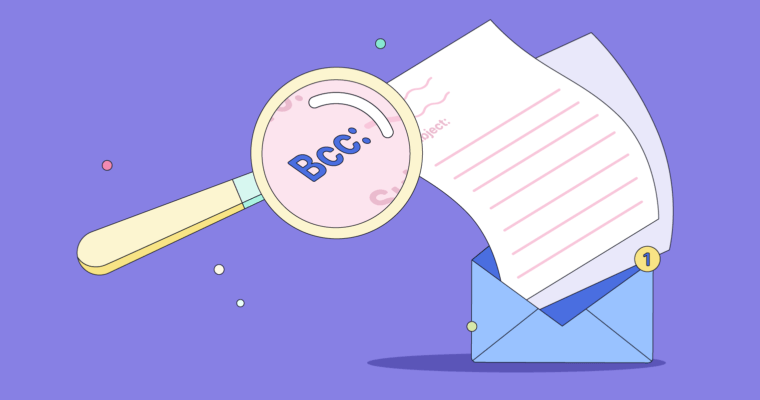
The reply-all function is a mixed blessing. It can be an essential part of your daily email routine, but if you’re careless, it can also be an easy way to embarrass yourself in front of your manager, colleagues, professional contacts, and even strangers.
Knowing when and how to best use reply-all is key to succeeding at, well, pretty much anything that involves sending email, like client outreach, internal communications, or planning a team outing. Below we’ll cover reasons to deploy it, situations where it’s less than ideal, and how to reply-all with tact, grace, and confidence.
When is reply-all appropriate?
To begin, let’s be clear that in many cases, it’s better to respond to a group email by messaging individuals rather than by replying-all.
A key question here is, What’s the simplest way to minimize both inbox clutter and confusion for everyone you’re replying to? If you can think of a better way to accomplish both, you should probably do that instead.
Still, there are plenty of situations where using reply-all is decidedly the right call.
Sometimes this is obvious: Your boss emails your team and asks you to update everyone on something you’re working on, for instance. Or a client emails you, your boss, and another peer with a timing question; if you’re the main person in charge of scheduling, this is a fine time to use reply-all. Note that in this scenario, part of the reason for replying-all is to let the others on your team know you took care of answering the client’s question.
Although reply-all is sometimes frowned upon for generating distracting, annoying, or unnecessary emails, a single, well-timed and thoughtful reply-all can avert more emails and follow-up questions.
Here’s an example: Let’s say you work in a newsroom and a colleague emails fifteen people urgently asking if anyone can help her unlock the supply cabinet to grab a field recorder and microphone for her upcoming reporting trip.
If you reply only to her and say, “Sure, I have a key and can check out a kit for you now,” odds are that others will reply and offer to do the same, along with an editor asking if it got done. In this case, it’s better to reply-all right away and make it clear to everyone that you’re handling the request.
Importantly, this same logic works at scale: If twenty people will receive your reply-all, and your response will be useful to most of them, it’s worth sending. That said, the more people on the thread, the higher the bar for relevance.
This type of calculation also works if you’re considering using reply-all to ask a question. If it’s likely to concern most of the other people on the thread, it might be worth asking in a way everyone can see, but be wary of overdoing this.
When should you not reply-all?
Let’s go back to the question we touched on earlier: What’s the best way to minimize both inbox clutter and confusion? If the email you’re thinking of sending wouldn’t be welcome or relevant to most of the people it would reach, reply-all is not the way to go.
Here’s an example: You and everyone in your department get an email saying that one of your colleagues has accepted a big new promotion and transfer. Congratulations are in order, and everyone is invited to swing by the patio at four o’clock for cake and fond farewells.
Do you (and everyone else in your department) need to reply-all with a caps-locked CONGRATS and the cake emoji? Probably not. In this case, just reply individually to the celebrated colleague, or better yet, congratulate them in person over cake.
A similar logic applies to more delicate or personal matters. When you need to politely correct someone or make sure accounts payable has your personal tax forms and current address, reply-all is rarely, if ever, optimal.
This idea is especially relevant where professional feedback is concerned because it’s not hard to imagine a scenario where even a well-intended correction given in front of a dozen colleagues is mortifying to the main recipient, cringe-inducing to everyone else on the chain, and risks making the sender look oblivious, at best.
Again, if your email won’t be of value to most of the people receiving it, don’t use reply-all.
How can I use reply-all to tactfully convey useful information?
Just as you would with emails to individuals, you should be polite and keep it short when replying-all. This means minimizing repetition and looking for ways to limit back-and-forth. Try to clarify whatever should happen next, particularly if it concerns action items for multiple recipients. In such cases, you may want to put each person’s name in bold or use a bulleted list to improve readability, as in this example:
Because this episode’s guest had to reschedule our recording session for a day earlier, we’ll need to step up our time frame.
- Marissa: Can you draft production notes this morning so we have time to edit them?
- Virgil: Can you be ready to tweak those and then get them to the host before 2 p.m.?
- Riley: Will you please make sure the guest has all the details about our recording setup?
Keep your audience in mind. Think about what information will best serve them and how to communicate it in a way that’s clear, concise, kind, and mistake-free.
Grammarly can help you reply-all with confidence
The last thing you want is to hit send and realize you’ve just used reply-all to blast colleagues or total strangers with an email full of punctuation, spelling, and grammatical mistakes.
Grammarly can save you time while safeguarding against awkward typos, misplaced commas, subject-verb disagreements, and other mistakes. Grammarly Premium users can get an extra assist with clarity-focused sentence rewrites and tone adjustments, so you can communicate with confidence.






